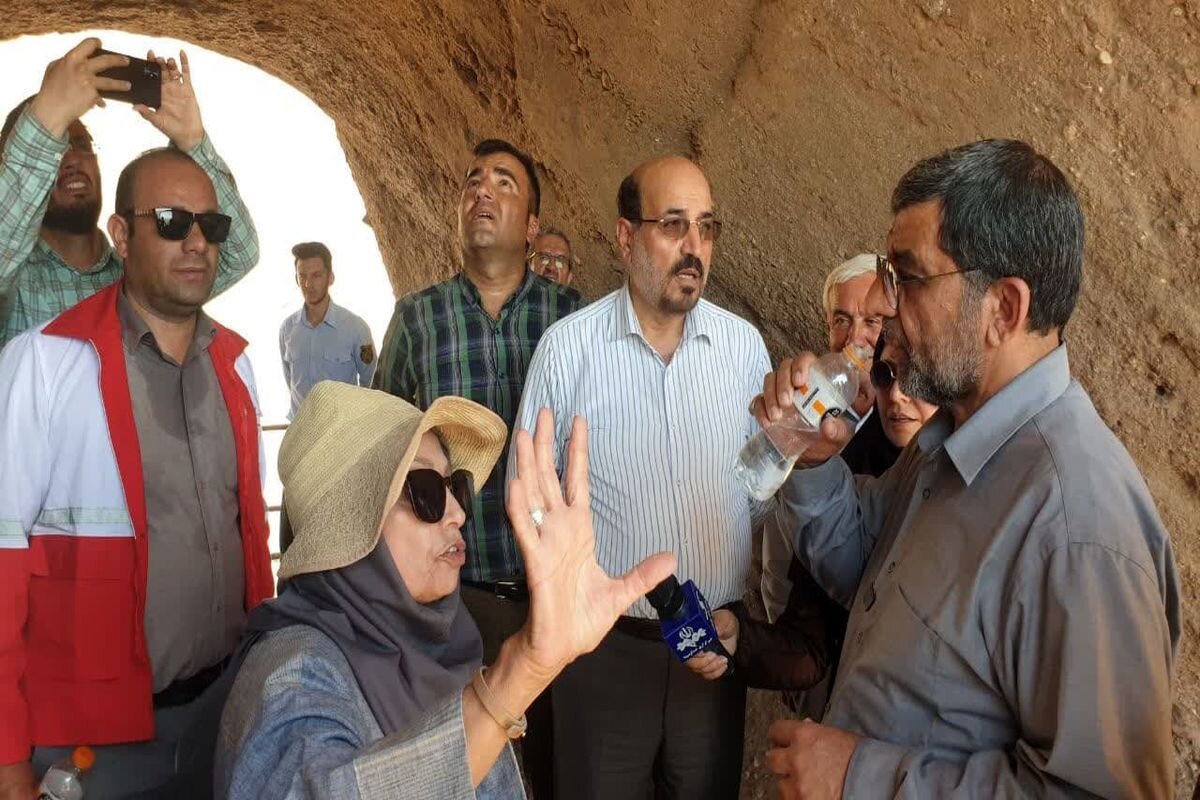Tourism minister visits 11th-century Alamut fortress

TEHRAN – On Tuesday, Cultural Heritage, Tourism and Handicrafts Minister Ezzatollah Zarghami paid a visit to the ancient Alamut fortress, which belonged to the Ismaili leader, Hasan ibn Sabbah, in the 11th century.
The minister closely visited the maintenance and restoration process of this treasured historical site, which is also a significant tourist destination in the Alamut region of Qazvin province.
During the visit, Zarghami walked an ascending path toward the fort, which is perched atop a steep hill, IRNA reported.
Moreover, the minister talked to several local people and was informed about their issues, problems, and demands, the report said.
According to a local official, the Alamut region has a great capacity for sightseeing and tourism. “We believe that Alamut is the advantage of Qazvin’s tourism and proper planning, and more attention to this area can lead to its growth and development at the national and provincial levels.”
Alamut is famed for a well-fortified castle nested on top of a hill, once sheltering the followers of Sabbah, who was the spiritual leader of a heretical Ismaili sect, known as ‘Assassins.’Narratives say Sabbah led a bizarre, much-feared mercenary organization whose members were dispatched to murder or kidnap leading political and religious figures of the day.
Narratives say that the name Alamut, which means “eagle’s nest”, is associated with a regional 8th-century king who spied an eagle landing amid its rugged lofty crags and was inspired to build an impregnable fortress.
The valleys of Assassins were once the spine of Sabbah (1070–1124) and his followers as remnants of their history are everywhere, hiding in the ancient sight. In the 1930s, British-Italian explorer and travel writer Freya Stark described her exploration of the place in her book “The Valleys of the Assassins.”
To reach the fortress, which is better known as Alamut castle, one should pass for nearly half along a narrow road surrounded by cherry and pomegranate orchards until a mass of gray-brown rock looms from the distance with fortifications perched atop a summit.
Assassins believed their actions would transport them to paradise. Supposedly, Sabbah cunningly cultivated such beliefs by getting his followers stoned on hashish (unbeknown to them) and then showing them beautiful secret gardens.
The castle was captured by Mongol ruler Hulagu Khan in 1256 using diplomatic trickery, having earlier forced the surrender of the Ismailis’ spiritual leader (Sabbah’s successor).
Sabbah’s rule from Alamut (which he renamed the City of Good Fortune) is shrouded in mystery and enigma. This is partly because most Ismaili records of the era were destroyed by the invading Mongols while the writings of their detractors survived.
For centuries, Alamut castle was almost forgotten and only returned to public consciousness with the publication of Stark’s 1930s travel diary, Valleys of the Assassins. A copy of that recently reprinted volume makes a great companion for the trip.
Sandwiched between the dry and barren plain of Qazvin in the south and the densely forested slopes of the Mazandaran province in the north, Alamut, draws many travelers with particular objectives in mind: to find the past in the present, to learn about other cultures, to have a breath of fresh air, or simply to get some distance from work, to cite a few.
AFM
Leave a Comment